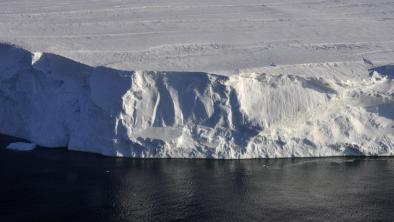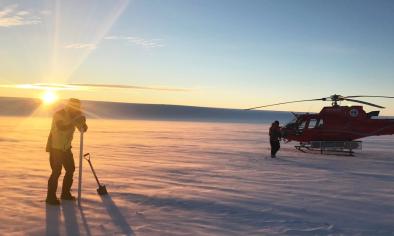Science Source
Constraining the mass balance of East Antarctica
In every experiment, mass loss from the west always exceeded gains in the east.
Jonathan Bamber, lead author of the study
- Investigates the mass balance of East Antarctica for the period 2003–2013 using a Bayesian statistical framework
- Combines satellite altimetry, gravimetry, and GPS with prior assumptions characterizing the underlying geophysical processes
- Runs three experiments based on two different assumptions to study possible solutions to the mass balance
- Solves for trends in surface mass balance, ice dynamics, and glacial isostatic adjustment
- The first assumption assigns low probability to ice dynamic mass loss in regions of slow flow, giving a mean dynamic trend of 17 ± 10 Gt yr−1 and a total mass imbalance of 57 ± 20 Gt yr−1
- The second assumption considers a long-term dynamic thickening hypothesis and an a priori solution for surface mass balance from a regional climate model
- The latter results in estimates 3 to 5 times larger for the ice dynamic trends but similar total mass imbalance
- In both cases, gains in East Antarctica are smaller than losses in West Antarctica
Related Content
Headline

Jan 29, 2020 | BBC News
Journey to the 'doomsday glacier'
Headline

Nov 22, 2019 | NOAA Climate.gov
Understanding climate: Antarctic sea ice extent
Headline

Mar 26, 2019 | The Guardian
Australian researchers find huge lakes beneath largest east Antarctic glacier
Science Source
| Geophysical Research Letters
Mass Loss of Totten and Moscow University Glaciers, East Antarctica, Using Regionally Optimized GRACE Mascons
Yara Mohajerani, Isabella Velicogna, Eric Rignot


